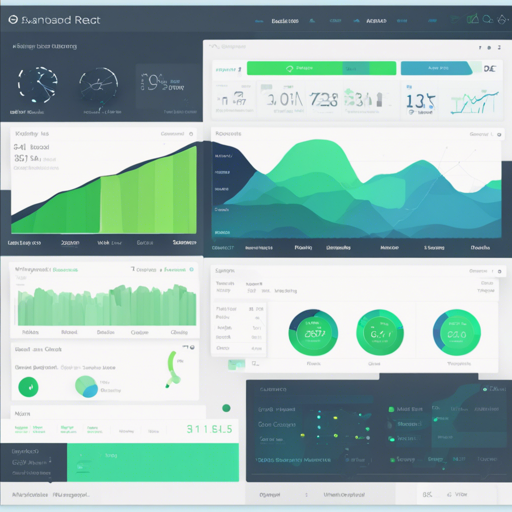In the world of web application development, creating a responsive dashboard is vital for providing users with a smooth and engaging experience. This article will guide you step-by-step through building a stunning admin dashboard using React, Bootstrap, Redux, GraphQL, and more, based on the Create React App framework.
Step 1: Get the Latest Version
To kick off your journey, you first need to clone the latest version of the React Dashboard template to your local machine. Here’s how you do it:
$ git clone -o react-dashboard -b master --single-branch https://github.com/flatlogic/react-dashboard.git MyApp
$ cd MyAppStep 2: Install the Required Dependencies
Next, you’ll need to install the project dependencies using the following command:
$ yarn installThis command will install both run-time project dependencies and developer tools listed in the package.json file.
Step 3: Run the Application
To start the application along with the built-in Express server, run:
$ yarn devSet up your database by running local servers like XAMPP or OpenServer, then connect to the database using the following files:
src/data/sequelize.jssrc/data/schema.js
Make sure to enable mutation in schema.js for successful CRUD operations.
Step 4: Creating Your Database
Now it’s time to set up your database. Follow these steps:
- Create a database (for example, name it
sequelize). - Add a
poststable to it that follows the structure shown in the provided screenshot.
To view your Node.js server, navigate to http://localhost:3000. For the GraphQL server, visit http://localhost:3000/graphql to access the IDE.
With everything set up, you can open your web application in a browser or on a mobile device and start coding! Thanks to Webpack, every modification you make inside the src folder will be automatically compiled, ensuring a seamless development experience.
Troubleshooting
If you run into issues while following the above steps, here are a few troubleshooting ideas:
- Check if you have the correct Node.js version (Node.js = 6.5).
- Ensure that your local server (like XAMPP) is configured and running.
- Verify that the database connection details in
sequelize.jsare accurate. - For more insights, updates, or to collaborate on AI development projects, stay connected with fxis.ai.
Conclusion
Building a beautiful, responsive React dashboard doesn’t have to be daunting. With the right tools and a little patience, you can create an impressive project that could easily compete with premium offerings on platforms like Themeforest or Wrapbootstrap.
At fxis.ai, we believe that such advancements are crucial for the future of AI, as they enable more comprehensive and effective solutions. Our team is continually exploring new methodologies to push the envelope in artificial intelligence, ensuring that our clients benefit from the latest technological innovations.

